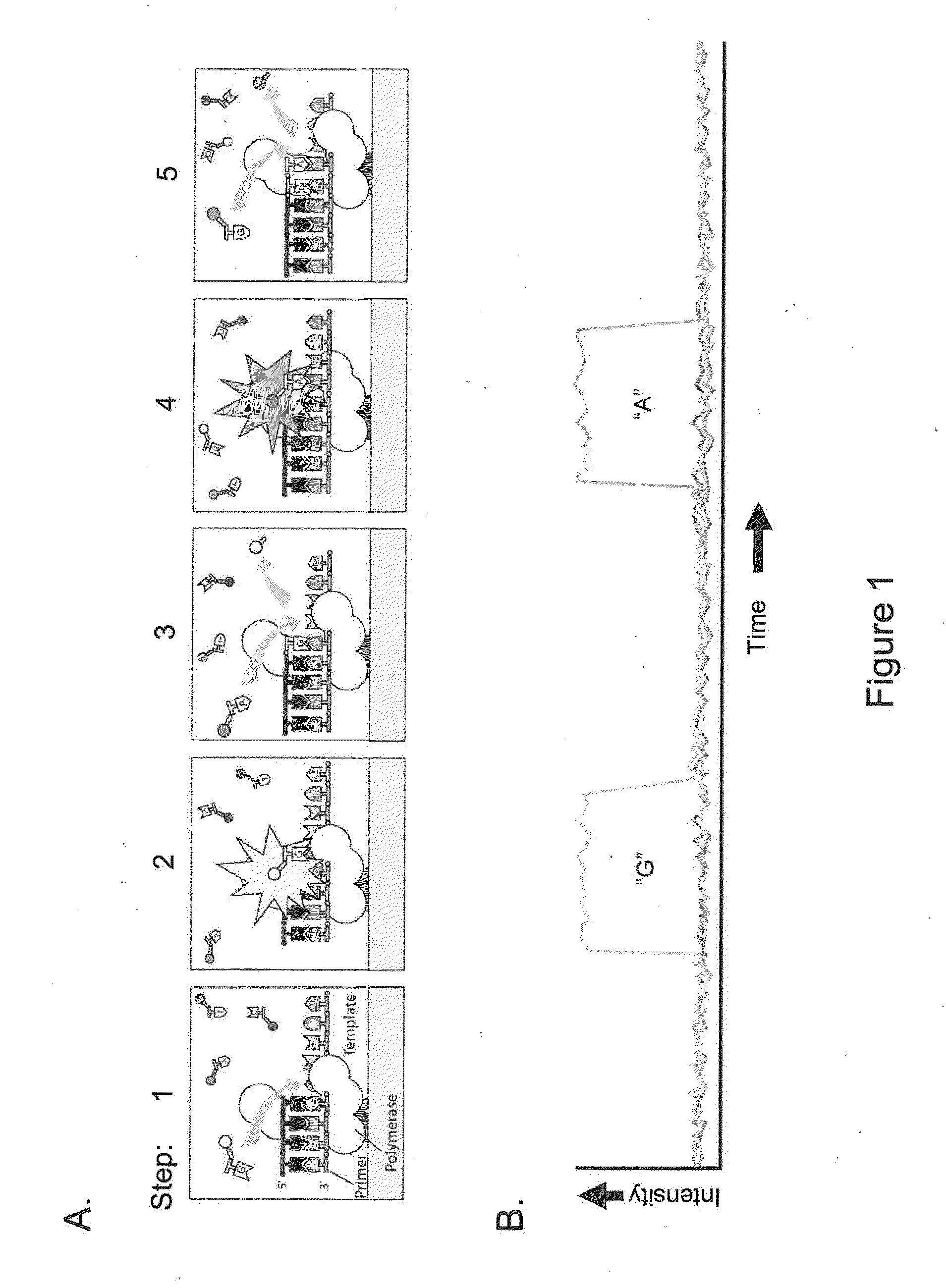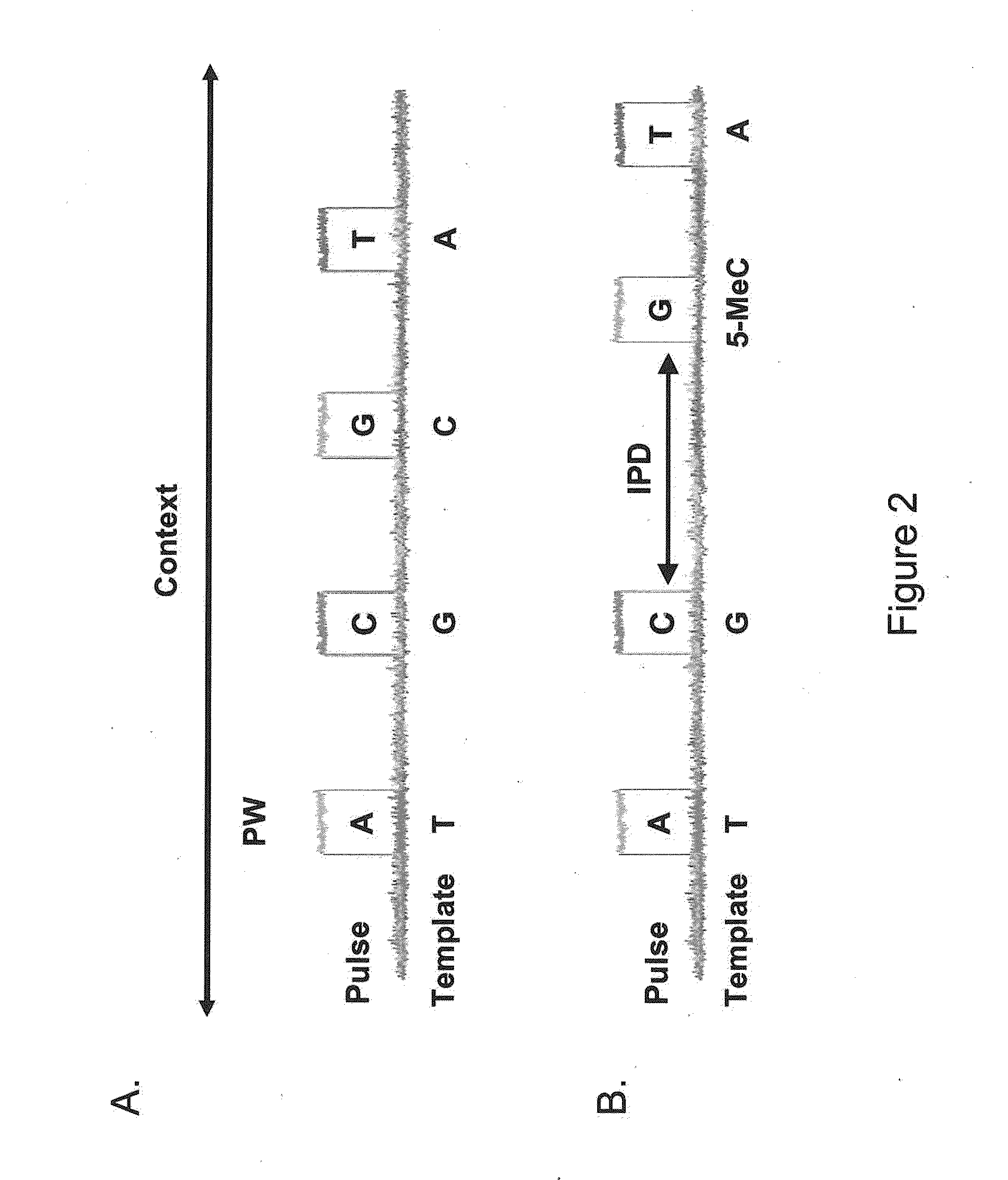Classification of nucleic acid templates
a nucleic acid and template technology, applied in the field of nucleic acid template classification, can solve the problems of large starting amount of samples, difficult high-resolution determination of genome-wide methylation patterns from a given sample, and large sample preparation time for bisulfite sequencing, etc., to facilitate the introduction of further modification, increase the response of enzymes, and facilitate the effect of processing
- Summary
- Abstract
- Description
- Claims
- Application Information
AI Technical Summary
Benefits of technology
Problems solved by technology
Method used
Image
Examples
Embodiment Construction
I. General
[0060]The present invention is generally directed to methods, compositions, and systems for detecting modifications within nucleic acid sequences, and in particularly preferred aspects, methylated nucleotides within sequence templates through the use of single molecule nucleic acid analysis. The ability to detect modifications within nucleic acid sequences is useful for mapping such modifications in various types and / or sets of nucleic acid sequences, e.g., across a set of mRNA transcripts, across a chromosomal region of interest, or across an entire genome. The modifications so mapped can then be related to transcriptional activity, secondary structure of the nucleic acid, siRNA activity, mRNA translation dynamics, kinetics and / or affinities of DNA- and RNA-binding proteins, and other aspects of nucleic acid (e.g., DNA and / or RNA) metabolism.
[0061]Although certain embodiments of the invention are described in terms of detection of modified nucleotides or other modificatio...
PUM
 Login to View More
Login to View More Abstract
Description
Claims
Application Information
 Login to View More
Login to View More - R&D
- Intellectual Property
- Life Sciences
- Materials
- Tech Scout
- Unparalleled Data Quality
- Higher Quality Content
- 60% Fewer Hallucinations
Browse by: Latest US Patents, China's latest patents, Technical Efficacy Thesaurus, Application Domain, Technology Topic, Popular Technical Reports.
© 2025 PatSnap. All rights reserved.Legal|Privacy policy|Modern Slavery Act Transparency Statement|Sitemap|About US| Contact US: help@patsnap.com



